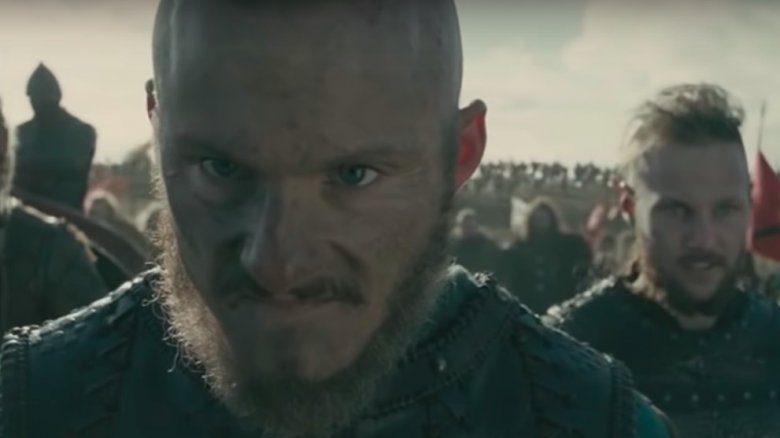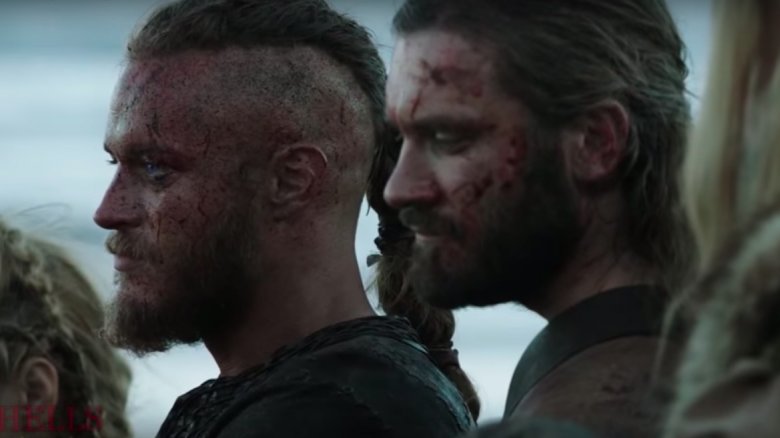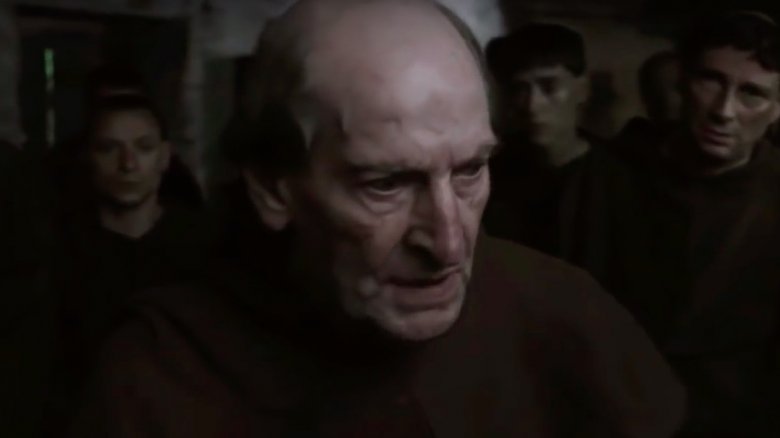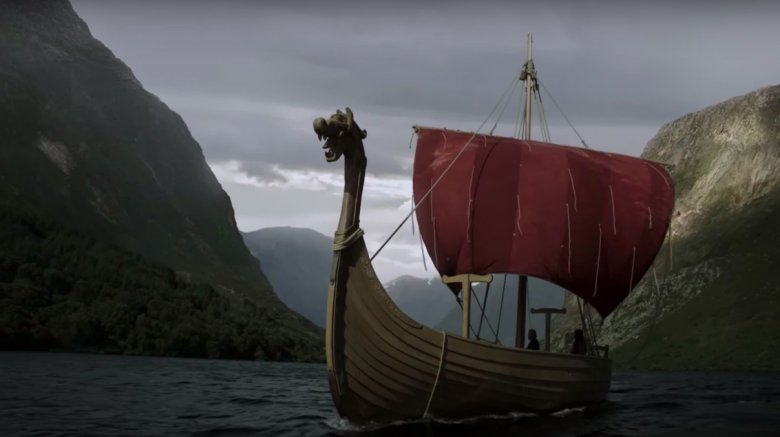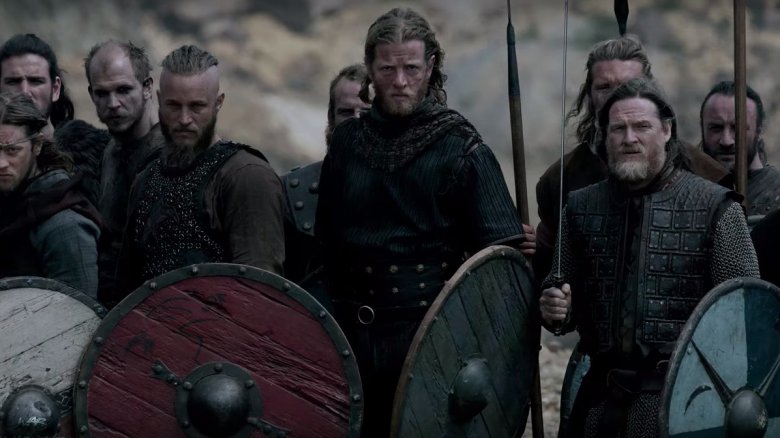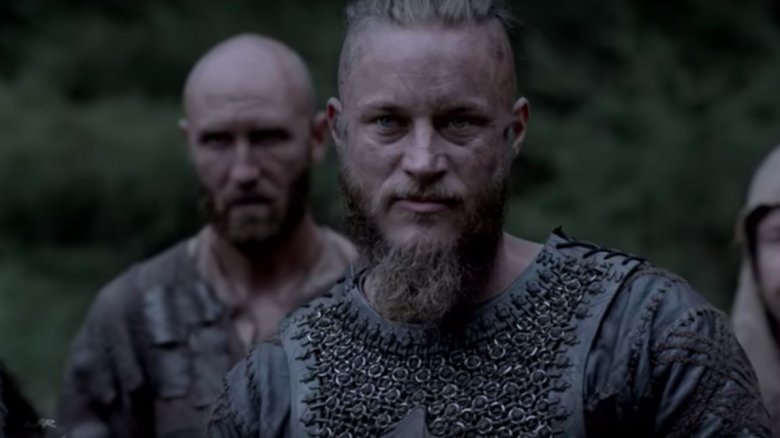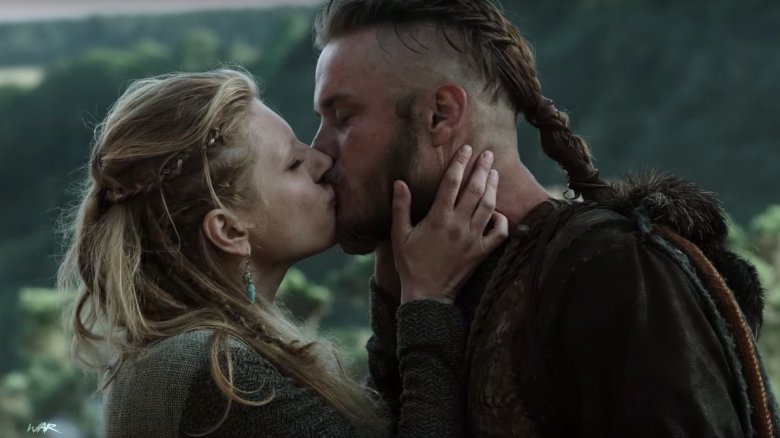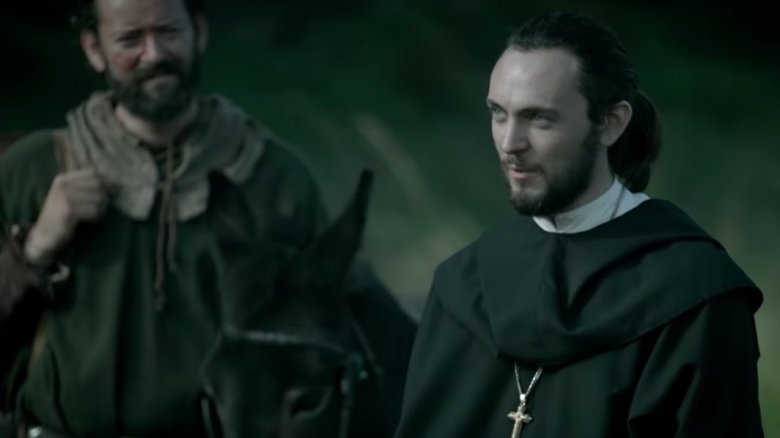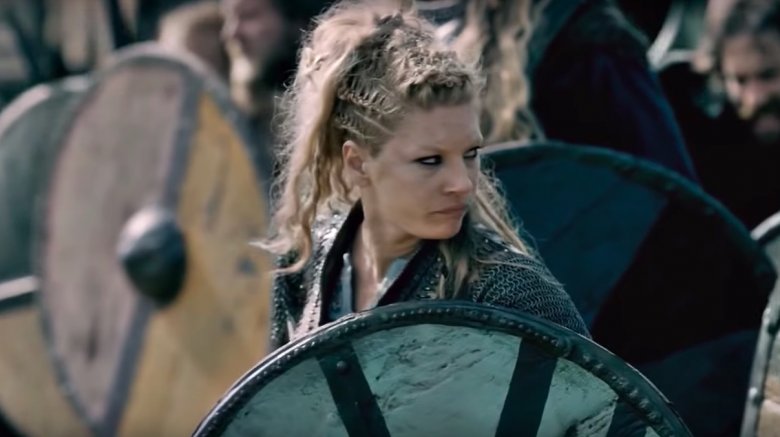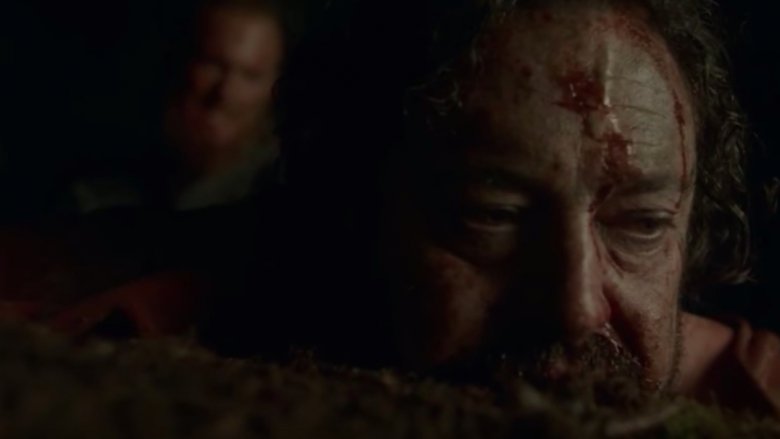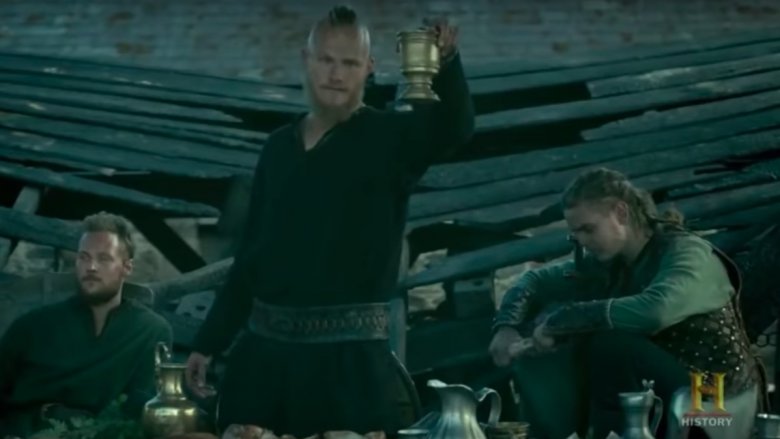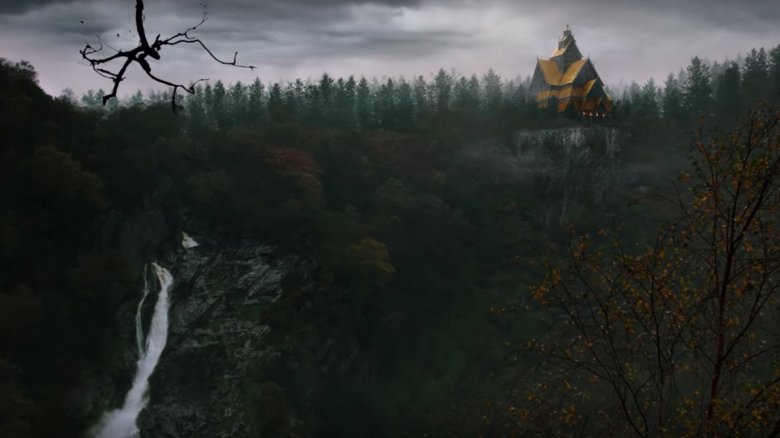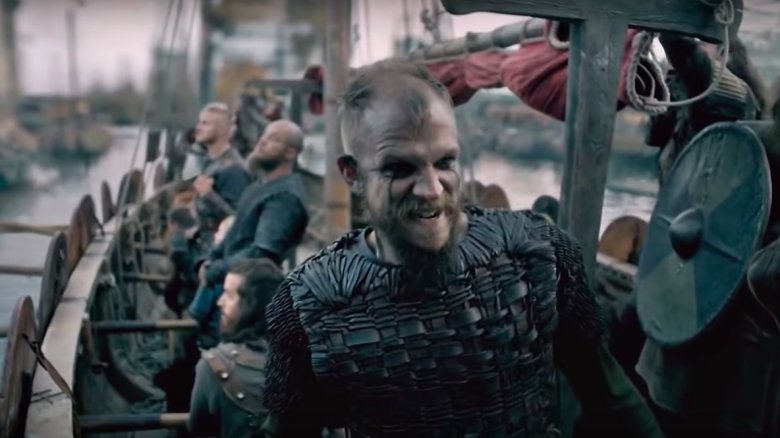What Vikings Gets Wrong About History
No one's really fooled into thinking that History Channel's Vikings is, you know, history. All that swoon-worthy masculinity, the fitted leather armor, the manly-man beards and the testosterone-fueled pillaging, well, it's pretty clear this show's audience was never supposed to be a bunch of stuffy old historians.
Still, it is the "History Channel," so you'd think they'd try to be more or less faithful to the truth. And they are in a lot of cases. You won't ever see History Channel Vikings running around in horned helmets, for example — those were probably an invention of 19th century Scandinavian artists. Horned helmets did exist in antiquity, but they predated the Vikings by at least a century and their use was almost certainly ceremonial.
Some other things the show gets right: Vikings did wear kohl eyeliner, and sunstones — which Ragnar uses to help find the way to England — are also known to have existed, though archaeologists have yet to find an example in a Viking burial site. But for every faithful recreation of the truth, there is at least one serious historical mistruth — some are minor, some are fairly inexcusable. Here are some of the worst.
Rollo and Ragnar weren't brothers and probably never even met
In season one, we are introduced to Ragnar Lothbrok ("Lothbrok," by the way means "Hairy Breeches," so take that however you want to) and his brother Rollo. Both were historical figures, though Ragnar himself was a King Arthur sort of figure (legendary, maybe a real person, but almost certainly greatly embellished) while Rollo is more firmly grounded in history.
According to Danish Net, Rollo was born in Scandinavia (probably Denmark) somewhere around 845, and he lived until around 930. It is true that he was a Viking and it is also true he participated in raids in the Kingdom of West Francia and eventually became the first ruler of Normandy. But he was almost certainly not related to Ragnar Lothbrok and it's unlikely the two ever even met. Ragnar (if he was indeed a real person) probably lived from around 820 to 865, which means he was at least 25 years Rollo's senior, so he would have been approaching the end of his life just as Rollo was entering adulthood.
So why this particular huge, glaring, historical error? Both men are fascinating figures, and it's easier for a television audience to invest in their two very divergent storylines if they're introduced at first as two parts of the same storyline. In other words, creative license.
The Vikings didn't kill St. Cuthbert; he died of natural causes
In season one, we get to witness firsthand the brutality of the Viking raiders when they attack a monastery on the island of Lindisfarne off the coast of Northumbria. During the raid, the Rollo kills an elderly Christian monk named Cuthbert, who was the mentor of Athelstan, one of the show's other major characters.
According to English Heritage, the actual raid happened in 793, and it really was as horrific as the series makes it out to be. Gold and silver was plundered, many monks perished, and some of the younger ones were abducted as slaves, which is basically what happens in the Athelstan storyline. But the major problem with the event as depicted is Cuthbert — he was a real person, in fact he was canonized St. Cuthbert after his death from natural causes in 687. Yes, Cuthbert died more than 100 years before the History Channel Vikings supposedly killed him in 793.
The real-life Cuthbert was an "incorrupt saint" (which means his remains didn't decompose), and his body and its relics attracted pilgrims to the shrine of St. Cuthbert in Lindisfarne long before the Vikings ever showed up. And unlike the living, fictional version of Cuthbert, the dead, canonized version of Cuthbert actually survived the Viking raid — his body was eventually moved and after the Norman conquest ended up in a Norman shrine, where it continued to attract pilgrims throughout the Middle Ages.
Ragnar Lothbrok didn't discover the British Isles
One of the more ridiculous errors of the series is the notion that, like a dashingly handsome, leather-clad, weird-hairdoed Christopher Columbus, Ragnar Lothrobk "discovered" the British Isles.
This little detail has peeved many a historian and student of ancient literature, including Eve Siebert who writes in Skeptic.com that the notion that the Vikings had no idea where England was is, frankly, stupid. "England. ENGLAND!!" she writes. "Stop acting as if you're sailing to frigging Atlantis! It's England. Everyone knows it's there! A good portion of western Europe's invaded it already!"
The truth is that England was not some mythical land — there was trade going on between Sacndinavians and Europeans before the Viking age, and one popular hypothesis among historians is that the Viking age actually began, at least in part, because Scandinavian traders felt like they were being discriminated against by Christian Europeans. Also, the raid on Lindisfarne wasn't even the first Viking raid in Great Britain, so there's that. But hey, the treatment of the "discovery" of England does make Ragnar seem even more legendary, so its effective as far as what showrunners were trying to accomplish, if fairly obnoxiously rude as far as actual history is concerned.
No Viking horned helmets, but no helmets at all?
So we've already established that Vikings didn't wear horned helmets, and thank the gods that the History Channel was at least faithful to that particular truth. Imagine Bjorn Ironsides goring his enemies like a bull — it would have been amusing for like five minutes but it would have dissolved into unwatchability pretty early on. But the show takes the whole helmet question into interesting direction by simply choosing to exclude them altogether.
The idea that the Vikings may have gone into battle with no protective headgear whatsoever seems far-fetched. According to the National Museum of Denmark, so far there is only one complete example of a Viking helmet in the archaeological record, though there are also several partially complete examples. These artifacts show that a Viking helmet had brow ridges to help protect the face, which makes perfect sense when you're, you know, planning to be in a place where people might be swinging sharp things at your face.
Now that's not to say that it isn't possible that some Vikings went into battle without headgear — in fact the scant few surviving examples of Viking helmets might imply that they weren't in widespread use, though it's also possible that it just wasn't traditional to include them in a burial. The second reason seems more likely than the first. Sure, Vikings were badasses, but they weren't stupid. Everyone knows you need a fully-functioning head to be an effective plunderer.
The Vikings' costumes are all wrong
Depending what your reasons are for watching the show, you might have noticed that Ragnar and his co-Vikings look a little, shall we say, like medieval Mad Max dominatrix punk rock bikers. So thumbs up to costume designers for maintaining that whole sexy badass look that has almost certainly drawn the eyes of folks who might not have formerly been interested in the Viking era, and thumbs down to costume designers who really aren't doing a very good job of making those Vikings look anything like the actual Vikings probably looked.
Sadly, the Vikings did not wear fitted leather tunics studded with metal. Leather garments would have been worn loose, which was more practical if a lot less sexy. Also, in the series the concept of color of any kind (unless you count Ragnar Lothbrok's dreamy blue eyes) barely seems to exist at all. According to Norse-Mythlogy.net, the Vikings almost certainly wore colorful clothes, including red, yellow, blue, and purple, and they likely wore patterned clothing as well. Men wore long tunics and trousers made from linen or wool and wool leg wrappings to help them stay warm during the harsh winters. Women wore linen under-dresses under a garment called a strap dress, and they would have likely worn them in various colors as well. Yeah, dark, drab colors implies badassery, but it's just not accurate.
Those Viking hairstyles ...
In the series, the Vikings have some crazily elaborate hairstyles that include cool braids, partially shaved heads and long beards. All very manly and punk rock, which is clearly the look the show is going for. But is it accurate? Not very. For a start, Vikings probably did not shave the sides of their heads. It's freaking cold in Scandinavia, and deliberately exposing most of your head to freezing temperatures seems stupid even for someone whose brains are already a little scrambled by multiple plundering-related head injuries. It's not super clear, though. Series creator Michael Hirst thinks they might have shaved their heads to keep lice at bay, though that would really only make sense if they were shaving their entire heads.
They did, according to historical drawings, shave the backs of their necks, but hair was kept longer on the top and front, which is similar to how Bjorn Ironsides wears his hair early in the series. Women wore their hair long, probably tied at the back and adorned with ribbons. It was also common for women to wear head scarves. So did they do those super cool elaborate braids? There doesn't seem to be much evidence for that, but who says they didn't? "In the end," Hirst once said, "how the f*** do you know what the Vikings looked like?"
Pretty much everything about Athelstan
The Anglo-Saxon monk Athelstan is one of the series' most interesting characters — he serves the dual purpose of providing a window into the culture of ancient Britain as well as giving viewers some of the most heart-wrenching moments in the show, like when Ragnar laments over his grave that the two men are destined for different after-lives. "I always believed that death is a fate far better than life, for you will be reunited with lost loved ones," Ragnar says. "But we will never meet again, my friend. I have a feeling that your god might object to me visiting you in heaven."
But alas, such a friendship probably wouldn't have ever happened. According to the Ancient History Encyclopedia, there's no record of a monk-turned-Viking in the historical saga of Ragnar Lothbrok. And since we know the character to be fictional, we also know that he couldn't have been the father of Alfred the Great.
The most objectionable treatment of Athelstan's character, though, is his crucifixion by Christians in "An Eye for an Eye." By some accounts, crucifixion probably ended in the fourth century, but if anyone was still doing it in Viking times it sure as heck wasn't the Christians. In fact, historians say there aren't any examples of Christian crucifixion in the historical record, and that Christians of that time would have actually viewed crucifixion as something holy, reserved only for Jesus and not for random lawbreakers, even formerly religious ones.
Viking shieldmaidens were probably not a thing
Yeah, that's disappointing. We all love depictions of fierce women warriors and society actually needs that right now. Strong female protagonists are great role models, whether historically accurate or not.
There are some references to women warriors in Old Norse literature. According to historian A.E Larsen, most of the fighting women the texts refer to are Valkyries, which aren't mortal women but supernatural beings who work for the god Odin. And some ancient observers wrote about women who "dressed themselves to look like men and spent almost every minute cultivating soldier's skills," but many of those writers were trying to depict non-Christian people as hedonistic, so they're not exactly stellar sources of information. And although some Viking women have been found in graves with weapons, it's hard to draw conclusions based on that kind of evidence. We don't know if the weapons were used in battle, were family heirlooms, or were simply kept for protection.
Even the literary Lagertha has mythical qualities. In one source, she's described as "flying about" on the battlefield, which may mean she was not a mortal woman but a Valkyrie. Or maybe just a mortal woman who was super-fast, we really can't tell. But hey, one could argue that the mere fact that they could have existed is enough to justify their inclusion in the series. After all, fierce women are great role models.
The blood eagle probably wasn't a thing
Unless you're a bonafide sociopath or an ER doctor or something, you probably closed your eyes during those very horrible scenes of brutality starring the "blood eagle," the horrific Viking method of execution where a certain unfortunate victim has the skin on his back pulled away, his ribs hacked apart until they can be yanked up past his spine, and his lungs ripped out and placed on his back so that they will flutter, birdlike, as he dies. At some point there's also a lot of salt water poured into his wound. Frankly, it seems pretty unlikely anyone would actually survive long enough to get to the fluttering lungs part of the story, but whatever. You thought drawing and quartering was awful.
Did this horribly brutal form of execution actually exist? According to Smithsonian, until recently historians mostly agreed that the blood eagle was real, if only because no later medieval writer could possibly dream up such a horror. But most accounts either come directly out of the Norse and Icelandic sagas — which were almost certainly greatly embellished — or from texts written hundreds of years after these events supposedly occurred. And the fact that descriptions of the blood eagle get more and more brutal and detailed as the centuries pass is further evidence that the ritual either didn't exist or has been greatly distorted through time. Maybe, though. You never really know.
We don't know what they called each other but it sure as heck wasn't Viking
Any time the entertainment industry tells the story of a far away, ancient land, there's bound to be some awkwardness. Vikings handles that awkwardness well in some cases, and poorly in others. For example, there are scenes where characters speak to each other in subtitled Old Norse or Old English, which provides a kind of authenticity that is lacking in other scenes, where characters are speaking to each other in fake Norwegian accented modern English.
But one problem that occasionally sticks out is the problem of what Vikings actually would have called each other. For the most part, we hear the British using terms like "Northmen" to describe Ragnar and his lot, but there are also scenes where the Vikings call each other "Viking," like when Erlendur says, "A Viking never gives up on his revenge."
According to the Conversation, the Norse word "vikingr" was used to describe a person who went on an adventure or expedition overseas, and the word "viking" was used to describe the activity itself. Neither word was used for an ethnic group, just as you wouldn't use "road-tripper" as a synonym for "American." It wasn't until the 14th and 15th centuries that the word "Viking" was applied the Vikings as a group. Of course this is a show where everyone speaks modern English during a time when no one spoke modern English, so why are we being picky?
The geography is messed up
Ragnar Lothbrok, if he indeed existed, was probably from Denmark, or perhaps Sweden. The geography of the show looks distinctively Norwegian, though. And Vikings even takes liberties with some of the known Viking places, like the Temple to Odin at Uppsala, which it depicts in a beautiful mountain setting. According to Ancient Origins, the actual Temple of Uppsala was in Sweden on a rather flat-looking grassy plain — the burial mounds that are supposed to be the final resting places of kings Aun, Egil, and Adils can still be seen at the original site.
Some lesser problems with the geography: Kattegat is a strait that connects part of the Baltic Sea and the North Sea, but the town of Kattegat is fictional. That's not such a heinous crime as far as creative license is concerned, since a largely fictionalized story is easier to tell in a largely fictionalized town, that way real history doesn't clash too much with fake history.
So the mountainous, snowy wonderland that Ragnar and his progeny live in is beautiful, but not especially accurate. It serves a purpose though. Showrunners want viewers to think of the Vikings as surviving in a wild, inhospitable landscape. The setting isn't supposed to be realistic, it's supposed to support the trajectory of the storyline.
The timelines are messed up, too
If you've devoted a few seasons to this show, at some point it's probably occurred to you that Lagertha looks pretty danged excellent for a grandmother. Must be the fresh, northern air and all the bloodshed. In fact, her character really doesn't start to look old until well into the fifth season, and sorry, special effects guys, gray hair alone does not complete the illusion. Also, at the time of his death, Ragnar has many grown sons yet only appears to have aged beard-wise and bald-wise. Time moves pretty strangely in Vikings.
The raid on the monastery at Lindisfarne happens early in the series — that real-life event happened in 793. Then in season three we jump forward in time to the raid on Paris in 845, which was more than a half a century after Lindisfarne. Okay, so maybe an elderly Ragnar could have pulled that off and we do know the northern air has that weird youth giving quality. But then in season four the Vikings raid Paris again — but the Ancient History Encyclopedia says that particular raid happened between the years 885 and 886, nearly a century after the raid on Lindisfarne. So at this point, we're starting to buy the whole ageless Viking thing a little bit less. But hey, we're suspending a lot of disbelief already, what's another 100 years?
